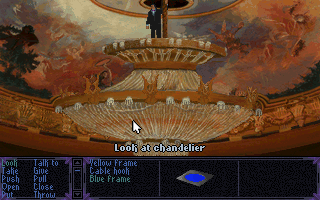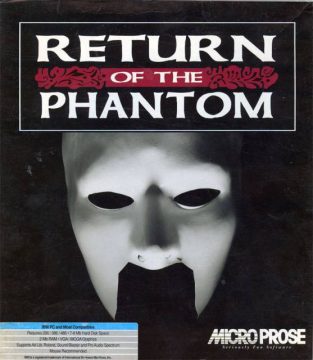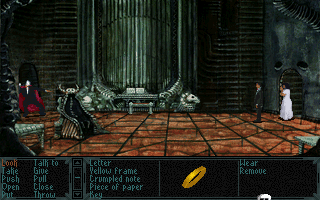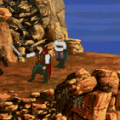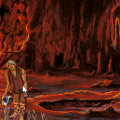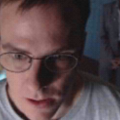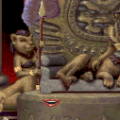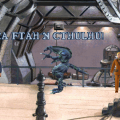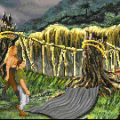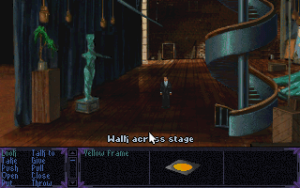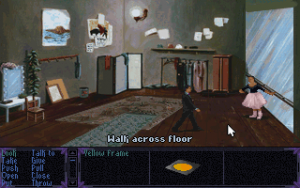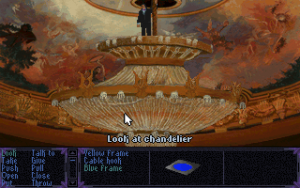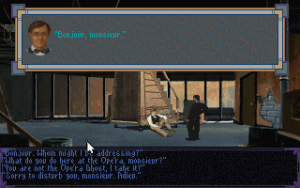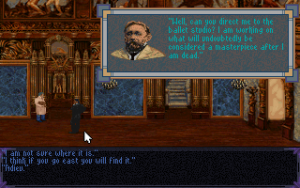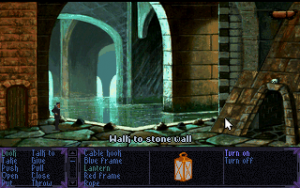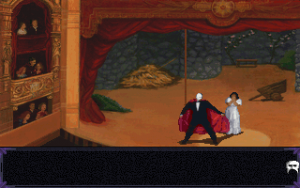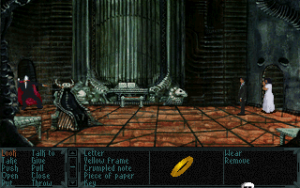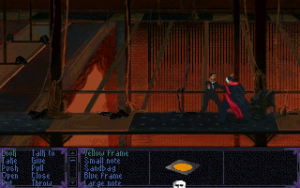MicroProse’s adventure games weren’t exactly known for their originality. Dragonsphere owed a huge debt to King’s Quest, and Rex Nebular and the Cosmic Gender Bender was a conceptual melding of Space Quest and Leisure Suit Larry. Return of the Phantom is its only true original title – as original as one can get for a game based on a public domain novel, anyway. The game was designed by Raymond Benson, who would later make a name for himself writing James Bond books and video game novelizations.
The story begins in the “present day” of 1992. During the opening performance of Don Juan Triumphant in the Paris opera house, the chandelier falls into the audience, killing several people. Inspector Raoul Montand is called in to investigate, especially regarding the numerous threatening letters left by the so-called “Opera Ghost” who haunts the premises. During his inspection, Christine Florent, the star actress, is found strangled in her dressing room. Montand discovers the perpetrator and struggles with him in a dramatic confrontation atop a catwalk, but our hero is knocked to the stage. When he awakens, he not only finds himself transported back in time to the year 1881, but he has also assumed the persona of Viscount Raoul de Chagny, the protagonist of novel The Phantom of the Opera. Stranger still, his apparent girlfriend, Christine Daae, bears a suspicious resemblance to the murdered Christine Florent from the future. Something strange is obviously afoot, and so Raoul resumes his investigations to catch the masked phantom and perhaps save the future. It’s an interesting concept, one that would have been more innovative had similar ground not already been tread in the 1989 movie version of The Phantom of the Opera starring Robert Englund.
This whole concept was used so the designers could adapt Gaston Leroux’s original story into an adventure game mystery. Of course, there are a handful of characters from the book; beyond Raoul and Christine, the self-proclaimed psychic Madame Giry plays a role as well, seemingly aware of Raoul’s time-traveling predicament. Another significant character, The Persian, is nowhere to be found. More bizarre is the appearance of Edgar Degas, a real-life French painter who often illustrated young ballerinas, but here, for some reason, is presented as a hilariously salacious, lip-licking pedophile.
In the process of rewriting the story, though, the designers forgot to give the player much to do. Through a good chunk of the game, there aren’t any real puzzles to solve, and the only major conundrum is a pixel-hunting fetch quest. The entire game takes place on the theater grounds, and while they aren’t very large, the extremely slow walking speed makes such exploration a huge annoyance. Most of the time is spent interrogating the various theater workers and cast members in both time periods and learning about the history of the theater and of the Phantom. It’s relatively well written, although the voice acting in the CD-ROM release is abhorrent. It sounds like it was recorded in a bathroom, and none of the actors can even remotely pronounce any of the French names and words they’re trying to say.
Then about two-thirds of the way through, you discover the underground catacombs beneath the opera house: a huge maze sequence complete with a few puzzle rooms. This isn’t an easy maze, either – there aren’t any clues to get through it, and it requires judicious mapping to conquer. Even though this section is long and boring, the climactic encounters with the Phantom, on top of the chandelier that crashed in the present, make for some level of excitement. Sadly, the ending is a bit daft, as there’s no satisfactory explanation for the time travel and it’s practically hand-waved as little more than magic.
Like most of the various adaptations of The Phantom of the Opera, fans will either be intrigued to see how the characters have been interpreted or horrified at the fan-fiction style reinvention. At the very least, it’s interesting to see this variation of Erik the Phantom, particularly in how violently sadistic he is. His chamber is filled with gore and furniture made out of bones. Play the wrong notes on his organ and you’ll end up engulfed in flames (complete with a ludicrously blood-curdling scream). Still, despite his bloodlust, he is kind of an idiot – what kind of moron puts a puzzle lock on his room and makes the password his name?
